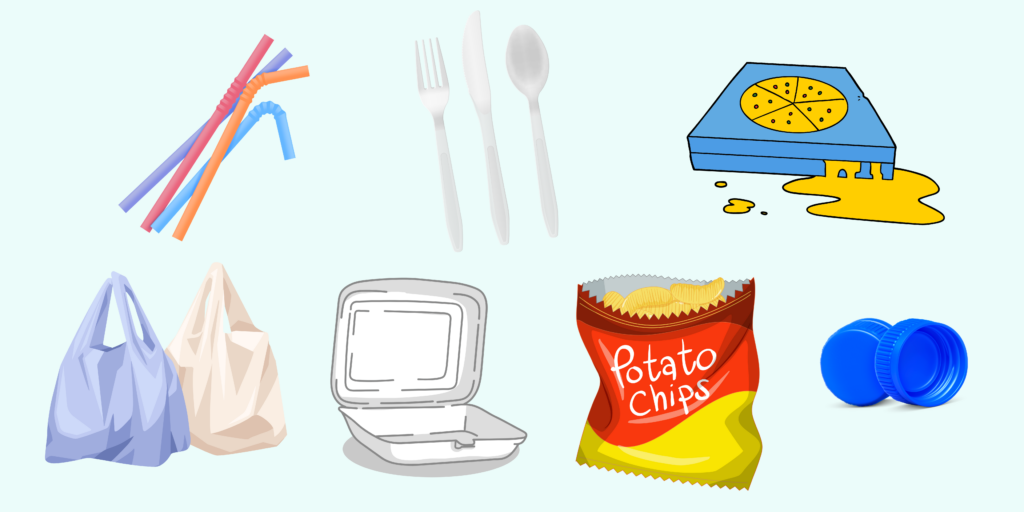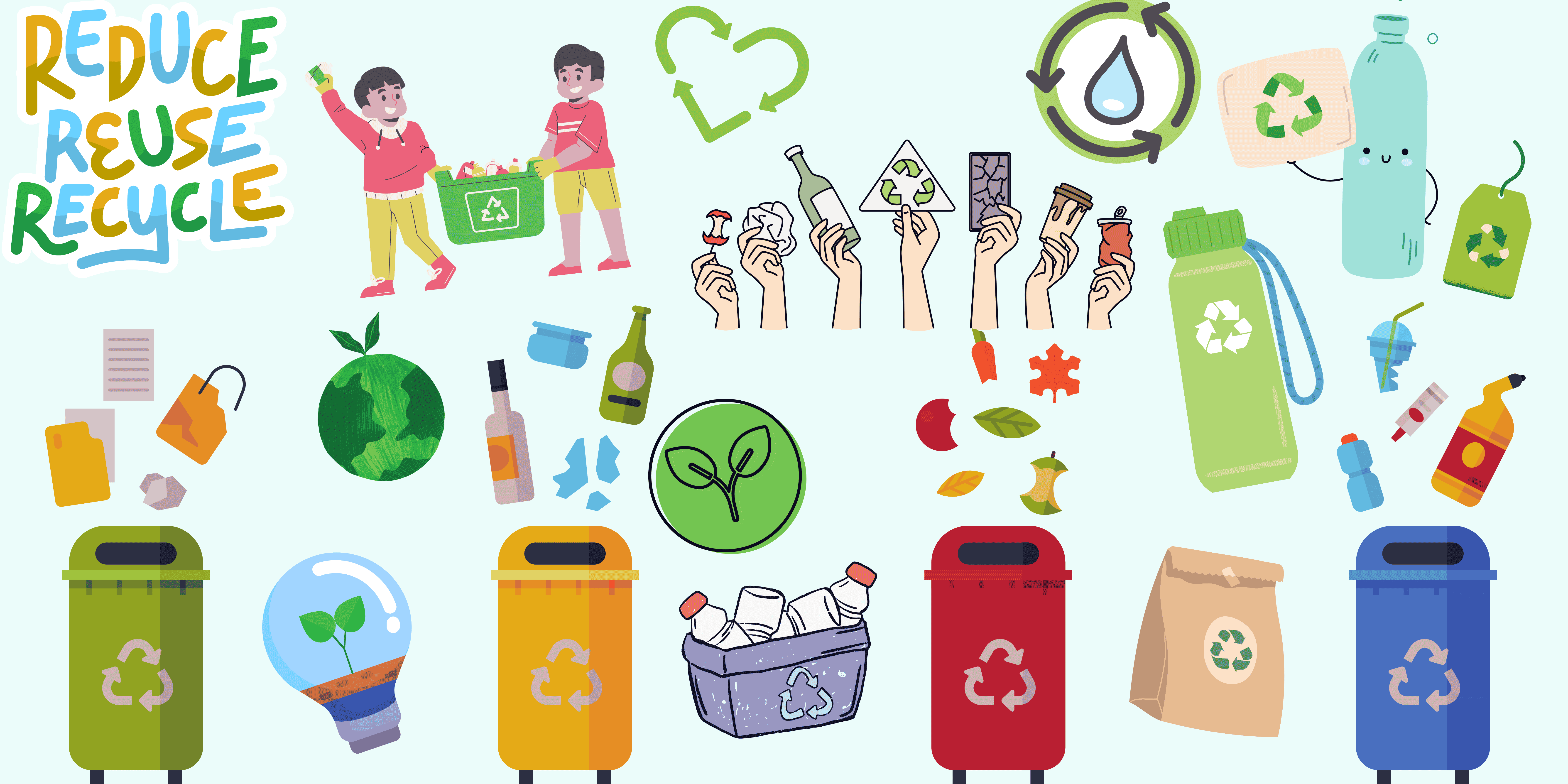Recycling is a cornerstone of sustainability efforts, helping reduce the need for new materials, conserving energy, and minimizing waste sent to landfills. However, despite its critical role, many misconceptions surround recycling, leading to confusion and inefficiency in how we manage waste. In this blog, we’ll debunk some common recycling myths and provide clarity on what really happens to the materials you recycle, shedding light on the challenges and improvements in modern recycling systems.
Section 1: Common Recycling Myths
Myth #1: Everything Can Be Recycled
A widespread misconception is that any item made of plastic, paper, or metal can be placed in the recycling bin. Many people assume that as long as a material has the recycling symbol, it’s safe to throw it in the curbside bin. However, this assumption is far from true and can lead to significant challenges within the recycling system. Just because an item is made of recyclable material doesn’t mean it’s accepted in your local recycling program.

Reality:
While it’s true that many materials, such as aluminum, certain plastics, glass, and paper, are recyclable, not everything we use daily can or should be recycled through standard curbside programs. Some items, especially those that aren’t clean or aren’t suited for the equipment used in recycling plants, can cause serious problems in the recycling process. Let’s look at some of the key offenders:
Styrofoam and Certain Plastics: Although Styrofoam (polystyrene) is technically recyclable, it is rarely accepted in curbside recycling programs because it is lightweight, bulky, and costly to process. Additionally, some types of plastic, particularly those labeled #3 (PVC) or #6 (polystyrene), are less frequently accepted due to the lack of market demand and the complexity of processing them. Always check local recycling guidelines for specific plastic numbers accepted in your area.
Plastic Bags: Plastic bags are one of the most common items mistakenly tossed into recycling bins. While these bags are made from recyclable plastic, they are not processed through typical curbside programs. The reason? Plastic bags tangle up recycling machinery, causing breakdowns and delays at Material Recovery Facilities (MRFs). These tangles require workers to stop the machines, manually remove the bags, and restart operations, leading to inefficiencies and increased costs. Instead, plastic bags should be taken to designated drop-off locations, typically found at grocery stores or other retail outlets, where they are collected separately and processed in facilities equipped to handle them.
Food-Contaminated Containers: Items like greasy pizza boxes, dirty takeout containers, and food-soiled paper are another big issue. While the materials themselves (cardboard, paper, plastic) are technically recyclable, food residue contaminates the recycling stream. When dirty materials enter the recycling system, they can ruin whole batches of otherwise recyclable items. For example, oils from greasy pizza boxes can seep into paper fibers, making it difficult to recycle. This contamination can cause recyclers to reject entire loads of recyclables, sending them to landfills instead. As a rule of thumb, clean and dry materials are key to successful recycling.
Mixed Materials: Items made from multiple types of materials—like plastic-lined paper coffee cups or chip bags made from metalized plastic—are difficult to recycle because they contain different layers of materials that cannot easily be separated. These multi-layered products often end up in the trash because most recycling plants are not equipped to disassemble or process them properly. It’s important to understand that just because an item has some recyclable components doesn’t mean the entire item can be recycled.
Small Items: Many small items, such as bottle caps, straws, and plastic utensils, can cause problems in recycling systems. Due to their size, these items can fall through sorting machinery or get caught in the equipment, potentially damaging or halting operations. Most recycling facilities have a minimum size requirement for materials (typically larger than a credit card) to prevent these issues. Small plastic or metal objects should either be disposed of properly in the trash or collected in bulk (such as placing metal caps inside a metal can) before recycling.
Myth #2: Rinsing Items is a Waste of Water
A common belief is that washing recyclables wastes water and energy, making it an unnecessary step in the recycling process
Reality:
Dirty recyclables can actually contaminate entire batches of material, which can lead to more waste as contaminated loads are often discarded. A quick rinse helps ensure that food residue doesn’t ruin otherwise recyclable items. It’s a small effort that helps keep the recycling stream clean and usable.
Myth #3: Recycling Takes More Energy Than It’s Worth
Some argue that the energy consumed in collecting, transporting, and processing recyclables outweighs the benefits, making recycling less environmentally friendly than it seems.
Reality:
Recycling saves significant amounts of energy compared to creating new materials. For instance, recycling aluminum saves up to 95% of the energy required to produce new aluminum from raw materials. Similarly, recycling glass and paper reduces energy consumption and greenhouse gas emissions, making recycling a net positive for the environment.
Myth #4: Biodegradable Items Don’t Need to Be Recycled
There’s a misconception that biodegradable items, like compostable plastics, will break down naturally and don’t need to be recycled.
Reality:
While biodegradable items do decompose, they require specific conditions, such as high heat and moisture, which are typically only found in industrial composting facilities. If sent to landfills, these products often don’t break down efficiently. In many cases, recycling is a more sustainable option, as it ensures that the materials are processed correctly and kept out of landfills.
Section 2: What Really Happens to Your Recycled Materials
The Recycling Process Breakdown
- Collection: Recyclable materials are collected from homes and businesses either through curbside programs or designated drop-off points.
- Sorting: After collection, recyclables are taken to Material Recovery Facilities (MRFs), where they are sorted by type (e.g., plastics, metals, paper). This is done through a combination of manual sorting and automated processes like magnets and air blowers.
- Processing: Once sorted, materials are cleaned and broken down into raw forms, such as shredded paper or melted plastic, to prepare them for manufacturing.
- Manufacturing: These processed materials are then sold to manufacturers to create new products, such as recycled paper, plastic containers, or metal parts.
Global Supply Chain for Recyclables
- Domestic vs. International Processing: Historically, a large portion of recyclables from Western countries was shipped to nations like China for processing. However, with China’s 2018 National Sword Policy, which banned many types of waste imports, recyclables are increasingly being processed domestically or sent to other countries with available capacity.
- China’s Policy Shift: This policy change has had a significant impact on global recycling flows, forcing countries to reassess their recycling systems and invest in local infrastructure.

Section 3: The Challenges of the Current Recycling System
Contamination in Recycling Streams
One of the biggest issues facing recycling systems today is contamination. When recyclables are mixed with non-recyclable materials or are dirty (e.g., food residue), they can contaminate the entire batch. Contamination leads to inefficiencies, increased costs, and in many cases, the rejection of entire loads of recyclables.
Economic and Market Realities
Recycling is also influenced by market demand for recycled materials. For example, the demand for glass and certain types of plastic is inconsistent, making it harder for recycling programs to remain financially viable. When market prices for recycled materials drop, it becomes less profitable to collect and process them.
Inconsistent Recycling Practices Across Regions
Recycling guidelines often vary by city, state, or country, which causes confusion among consumers. What is recyclable in one area might not be in another, leading to improper sorting and contamination. This inconsistency complicates efforts to streamline recycling practices and educate the public effectively.
Section 5: What You Can Do as a Consumer

Know What’s Recyclable in Your Area
It’s essential to follow your local recycling guidelines to avoid contamination. Many cities offer lists of acceptable materials online, and understanding these rules helps ensure that your recyclables are processed properly.
Reduce and Reuse Before You Recycle
While recycling is important, reducing waste and reusing items should come first. By minimizing the amount of waste you produce, you lessen the burden on recycling facilities and landfills.
Support Policies and Companies Focused on Sustainability
Advocating for local and national recycling reforms, such as bans on single-use plastics or expanded recycling programs, can make a difference. Additionally, supporting companies that prioritize sustainability and use recycled materials in their products helps promote a circular economy.
Conclusion
Debunking common recycling myths is the first step in improving how we manage waste. Understanding what really happens to our recyclables and the challenges that the recycling system faces helps us become more mindful consumers. By making informed decisions, supporting sustainable practices, and continuing to reduce waste, we can all contribute to a more effective recycling system and a healthier planet.
Leave a Reply